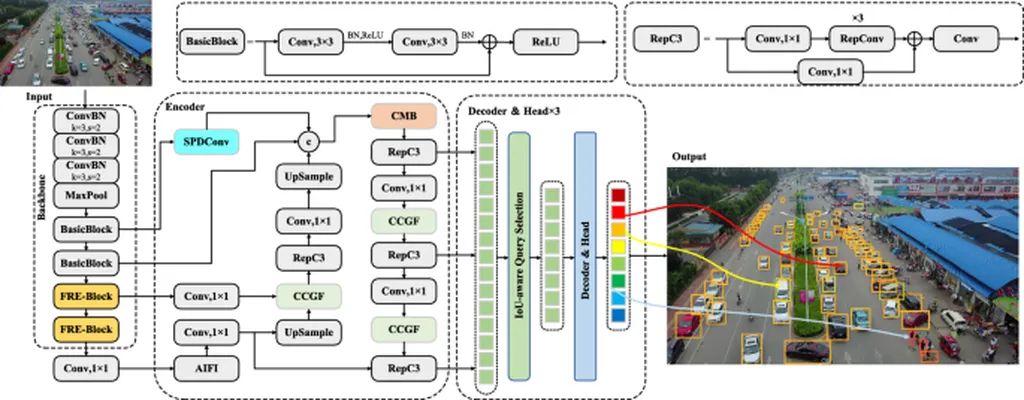In the rapidly evolving world of uncrewed aerial vehicles (UAVs), the ability to detect small objects with precision is becoming increasingly vital for industries such as traffic monitoring, precision agriculture, and power system inspection. A recent breakthrough in this field comes from Boyang Zhang, a researcher at the School of Electrical Engineering, Suihua University in China. Zhang and his team have developed an enhanced small object detection algorithm called DFA-DETR, which promises to revolutionize how UAVs identify and track tiny details from the sky.
The challenge of detecting small objects in UAV images is multifaceted. Objects often appear with limited pixels, leading to inadequate feature representation and poor discrimination between the target and the background. To tackle these issues, Zhang’s team introduced several innovative modules. The Hierarchical Attention Feature Extraction with Adaptive Gating (HAFE-AG) module, for instance, enhances detail feature representation through cross-stage local fusion and multi-scale multi-head self-attention mechanisms. This means that the algorithm can now better focus on the intricate details that were previously hard to discern.
Another key innovation is the Dynamic Multi-Path Feature Pyramid Network (DMP-FPN), which employs bidirectional multi-path information flow and Shift-Enhanced Channel Reorganization (SECR) operations. This allows for deep feature interaction and fusion at different scales, making the detection process more robust and accurate. “The DMP-FPN is particularly effective in handling the variability in object sizes and scales that we often encounter in UAV imagery,” Zhang explained. “This bidirectional flow of information ensures that we capture both the fine details and the broader context, which is crucial for accurate detection.”
The Wavelet-Driven Contrast Enhancement Aggregation (WCEA) module further enhances the contrast between objects and the background using Haar wavelet decomposition. This separation of low-frequency approximation and high-frequency detail information significantly improves the algorithm’s ability to distinguish small objects from their surroundings.
The results speak for themselves. Compared to the baseline RT-DETR-R18 model, DFA-DETR achieved performance improvements of 3.3% and 1.9% in AP50 and APs metrics on the VisDrone2019 dataset. Additionally, the model showed strong robustness, achieving 2% and 4.3% improvements in AP50 and APs metrics on the HIT-UAV dataset. These improvements are not just incremental; they represent a significant leap forward in the field of small object detection.
For the energy sector, the implications are profound. UAVs equipped with this advanced detection algorithm can more accurately monitor power lines, identify potential faults, and inspect infrastructure for damage. This level of precision can lead to more efficient maintenance schedules, reduced downtime, and ultimately, lower costs. “The energy sector stands to benefit immensely from this technology,” Zhang noted. “By enhancing our ability to detect small objects, we can ensure the safety and reliability of power systems, which is crucial for both economic and environmental sustainability.”
The research, published in the IEEE Access journal, translates to “IEEE Open Access” in English, underscores the growing importance of advanced algorithms in the field of UAV technology. As the demand for more precise and reliable detection methods continues to grow, innovations like DFA-DETR are poised to shape the future of UAV applications across various industries. The work of Zhang and his team not only addresses current challenges but also paves the way for future developments, ensuring that UAVs remain at the forefront of technological advancement.
In a world where precision and efficiency are paramount, this research offers a glimpse into a future where UAVs can see and understand the world with unprecedented clarity. As industries continue to adopt and adapt to these technologies, the impact of such innovations will be felt far and wide, driving progress and shaping the landscape of tomorrow.

